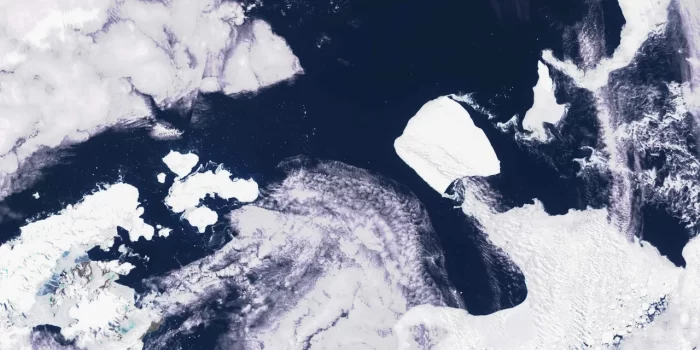The world’s largest iceberg, A23a, has been captured on camera setting out on a historic journey into the Southern Ocean, in a breathtaking show of nature’s grandeur. With an astounding area of 1,540 square miles, this enormous iceberg—more than twice the size of Greater London—has drawn attention from all over the world.
A week ago, A23a made headlines as it broke free from its 30-year confinement to the ocean floor. The British Antarctic Survey (BAS) seized the opportunity and recently released breathtaking footage and images captured by the RRS Sir David Attenborough. The iceberg, affectionately dubbed a ‘megaberg,’ extends far beyond the research vessel, standing at an impressive 1,312 feet thick.
Dr. Andrew Meijers, Chief Scientist on RRS Sir David Attenborough and Polar Oceans Science Leader at BAS, expressed the fortuitous alignment of the iceberg’s route with the vessel’s planned path. A23a, originating from the Filchner Ice Shelf in 1986, had remained grounded until last week when it began its majestic journey.

As the megaberg floats into the Southern Ocean, it is expected to be carried by the Antarctic Circumpolar Current toward ‘iceberg alley,’ a common trajectory leading to the sub-Antarctic island of South Georgia. This week, the RRS Sir David Attenborough encountered the iceberg during its planned route, providing scientists with an up-close look and an opportunity to take samples.
In light of climate change, researchers seek to comprehend how A23a affects the Southern Ocean and its ecosystems. The samples taken from the ocean’s surface waters surrounding the iceberg, according to mission biogeochemist Laura Taylor, will help us understand how these enormous icebergs affect the ocean’s carbon balance.

As more icebergs break off the Antarctic continent, the record for the largest iceberg is always changing. Antarctic and Greenland coasts are experiencing instability as a result of rapid melting brought on by rising air and sea temperatures brought on by climate change. Scientists stress that iceberg calving is a normal aspect of glaciers’ life cycles despite these alterations.
Scientists are hoping to learn more about the complex interactions between icebergs, the ocean, and the fragile balance of Earth’s climate by delving into the riddles surrounding A23a.


